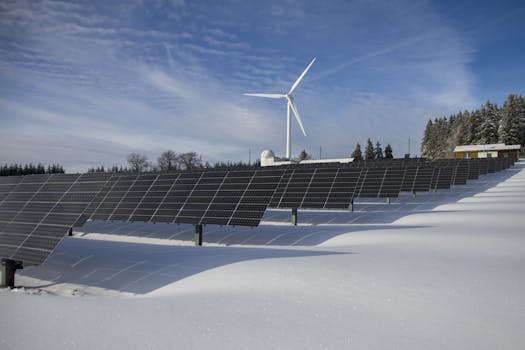
Introduction

As the urgency for environmentally friendly solutions escalates, the quest for efficient renewable energy technologies has gained unprecedented momentum. The transition towards cleaner energy sources is paramount to countering the impacts of climate change and ushering in a more sustainable world. In this article, we will explore several key breakthroughs that are shaping the field of renewable energy.
Advancements in Solar Power Technology

Solar energy technology has experienced a renaissance with significant innovations in photonics and material science. Perovskite solar cells are a game changer, combining high efficiency with low production costs. Recent studies have revealed that perovskite cells can reach efficiency levels of over 28%, making them a formidable competitor in the solar landscape. Additionally, progress in bifacial solar panels, which capture sunlight on both sides, is also paving the way for higher energy yields.
Next-Generation Wind Energy Solutions

Wind energy continues to circulate through and revolutionize energy markets around the globe. Turbine efficiency has been on the rise, with newer models being able to generate power at lower wind speeds, extending the viability of wind farms in various climates. Floating offshore wind farms exemplify this trend, positioning turbines further out to sea, where wind conditions are typically stronger and more consistent. This innovation efforts will increase energy yields while reducing the visual and environmental impacts associated with onshore installations.
Energy Storage Innovations

An often-overlooked aspect of renewable energy is the efficient storage of energy. Developments in battery technology are now addressing this transport bottleneck through efficient and scalable methods. Solid-state batteries show promise with increased energy density and reduced risks associated with conventional lithium-ion chemistries. At the same time, flow batteries offer scalable storage solutions ideal for integration with renewable sources, enabling constant energy availability during intermittent production periods.
Green Hydrogen: A Clean Cloud on the Horizon

As energy transitions want, renewables require supplementary technologies to function effectively. Enter green hydrogen: generated using electricity from renewable sources to extract hydrogen from water molecules. This exciting development not only offers a clean fuel alternative but also couples with various industries by providing the high-energy demands of transportation and rail sectors. Recent strides have shown progressive reductions in the cost of electrolysis and improvements in systems that assimilate large-scale hydrogen production.
Conclusion

The continuing advancements in renewable energy technologies portray a landscape ripe with potentials. With innovative solutions across different sectors such as solar, wind, energy storage, and emerging concepts like green hydrogen, the future of energy production holds more possibilities than ever. It is incumbent upon all associated stakeholders – researchers, policymakers, businesses, and consumers – to foster these technologies that stimulate sustainable growth, ensuring our planets are inclusive and capable for living life fully. Arming oneself with the knowledge of capabilities of renewable technologies today can truly shape better employments of energy, lifted by modern sustainable practices.




